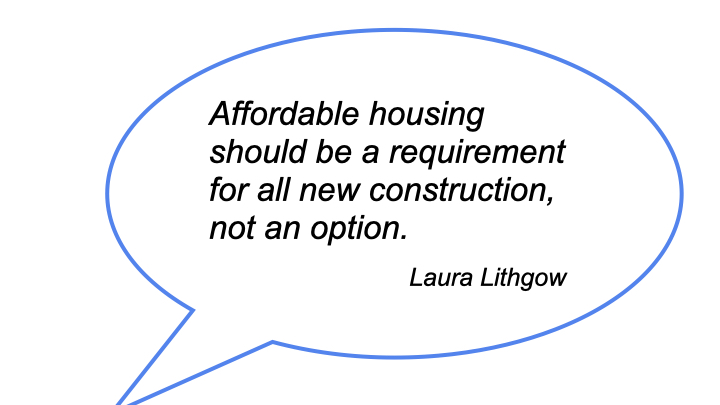If luxury housing seems to be rising all over the city that’s because it is. So much is going up so fast that it can only have a transformative and gentrifying effect on the city. And the statistics on new luxury or market rate housing demonstrate this. At the same time, there is very little affordable housing being created. Taken together, the disparity between the two kinds of housing being built make up what might be called, “gentrification math” – a statistical portrait of a gentrifying city.

Downtown, by the waterfront, was the first area of the city to develop into an affluent enclave with the rise of corporate and luxury housing towers. The exclusive nature of this area and the tax breaks that subsidized it, raised questions about a “tale of two cities”

Once the waterfront was redeveloped, city officials and investors turned to other areas of the city for real estate development opportunities. According to the mayor, this time the benefits of new growth would be shared more equitably. And, while new development began to take place all over the city, the Journal Square area, with its transportation hub, received the most attention and investment.

Like Journal Square, the Bergen-Lafayette area’s redevelopment is centered around public transportation – the Bergen-Hudson Light Rail Station. Developers also tout its quick access to local highways. This area appears to have the most affordable housing units.

The Westside area of the city appears to have the least amount of affordable housing units. However, the statistics here may be misleading. The data for this section of the city does not specify over what period of time the affordable housing was created. Also, this area contains the Bayfront development project which will ultimately have over 8,000 housing units, 35% of which will be affordable.

The huge gap between the growth of luxury versus affordable housing is rooted in rezoning the city to promote the creation of more luxury housing. This has greatly increased the profit potential for developers without any givebacks for residents in the form of affordable housing. Only when developers need a variance or exception to zoning regulations are they required to include some affordable housing in their projects. This can range from 5% to 20%, but is most often at the lower end of this range. Most developers don’t request a variance requiring affordable housing which explains why so few are created.
The statistics on the creation of luxury housing in comparison to affordable housing paint a vivid picture of a gentrifying city. They also show how the city’s reliance on luxury housing developers to create affordable housing has not worked, raising the questions: Why is the city relying on luxury housing developers to create affordable housing? That’s not what they do or where their interests lie. Is there another way to create housing for the city’s working and middle class families? What do you think?
Follow This Blog
Get new content delivered directly to your inbox.
- Gentrification Math & the False Promise of Affordable Housing
- Why is the City Selling Public Property to Luxury Housing Developers?
- Why So Much Luxury Housing in a City Where Most Can’t Afford It?
- Why Do So Many New Apartment Houses Look Alike?
- Signs of Gentrification: House Numbers, Their Color and Design


I am shocked that this tired argument continues to be made. Guess what would happen if that “luxury” unit was never developed? The luxury tenant would instead displace an existing resident in a non-luxury building. This exact phenomenon has happened in countless places across the country, including New York City and San Francisco. Where yesterday’s middle class housing can only be afforded by today’s rich.
Jersey City is attempting to follow instead the likes of Austin, Texas, where a sufficient amount of new housing is built that existing residents are not displaced, and instead the median rent on existing units goes down. When enough housing is built, housing becomes MORE AFFORDABLE.
LikeLike